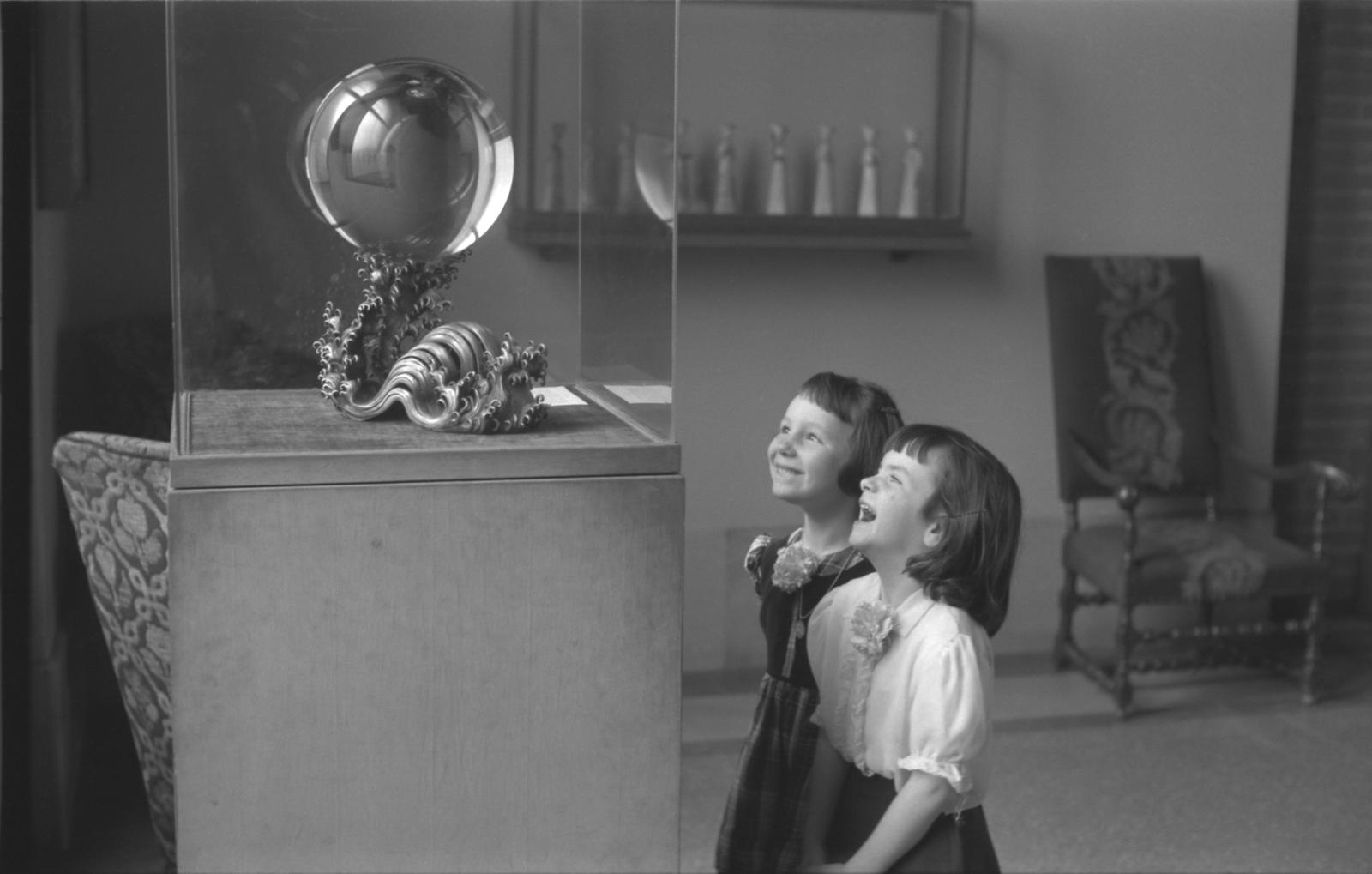
The most remarkable feature of the collection is the magnificent crystal sphere, the Dowager Empress. Originally a treasure of the Imperial Palace in Pekin, it had wandered for a decade or more though the country, heard of here and there, always eagerly sought, but continually lost sight of, until at last this summer it appeared in Shanghai and was acquired by the Wanamaker Store.
The origins of the Penn Museum's crystal sphere are a mystery. It was purchased in 1927 from the Far East Shop of John Wanamaker's famous department store in Philadelphia in memory of George Byron Gordon, the recently deceased Director of the Penn Museum. In the booklet that accompanied its sale, the department store advanced an exciting tale of the sphere’s exotic origins, implying that it had once belonged to the Empress Dowager Cixi (1836-1908 CE) of China.
No evidence has ever come to light that supports this, or any other, account of the sphere's origins. It is believed to be the third largest crystal sphere in the world, with a diameter of 25.4 cm. Only the spheres in the Smithsonian (32.7 cm) and the Crow Collection in Dallas (28.9 cm) are larger. The fourth-largest sphere (22 cm) is also here in Philadelphia, at the Philadelphia Museum of Art.
The silver stand, in the shape of a wave, was made in Japan, but bears no maker’s mark, only the words: “Made in Japan” on the underside. A photograph from the Wanamaker catalog shows the sphere resting on a different stand from its current one. This may mean the silver wave stand was commissioned as a replacement for the old stand.
The sphere is not made of glass, but rather from a naturally occurring crystal of pure quartz, and was shaped into a sphere through years of constant turning in a semi-cylindrical container filled with abrasive powders and water.
It currently resides in the center of the Chinese Rotunda where it continues to delight and fascinate visitors young and old.
What in the World - Part Five by Pablo Heguera
This video is the fifth installment of What in the World, a series of six videos produced by Pablo Helguera on the history of the Museum of Archaeology and Anthropology

Online Resources
Expedition Magazine
- The Purchase, Theft, and Recovery of the Crystal Ball
- Goldberg Variations: Archives Houses Over 16,000 Eclectic Images From Photographer Reuben Goldberg
- "...Very Best Inspirations of the Past" - The Wanamaker Bronzes
Other Crystal Balls

